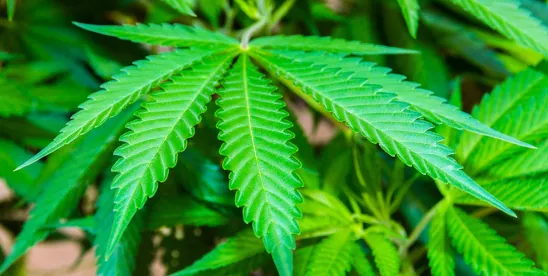Few areas of law have been able to expose the contradictions of federal cannabis policy quite like the Dormant Commerce Clause. The Constitution’s long-standing rule against state economic protectionism has recently found itself in the middle of cannabis licensing disputes. The result is a body of case law that is fractured, just like the state-by-state markets it governs.
The Second Circuit’s August 12 decision in Variscite NY Four, LLC v. New York State Cannabis Control Board is the latest entry in this unfolding story and contributes to a widening split amongst federal courts – one that may eventually demand Supreme Court review. However the courts ultimately resolve the issue, it will profoundly shape who can participate, who can invest, and how states design their markets.
What Exactly Is the Dormant Commerce Clause?
At the risk of making our readers’ brains go dormant, here is an explanation (or perhaps a refresher) on what the Dormant Commerce Clause is and from which authority it comes.
The Dormant Commerce Clause, also referred to as the “Negative Commerce Clause,” derives its authority from Article 1, Section 8, Clause 3 of the United States Constitution, which grants Congress the power to regulate “commerce” among the states. Although there has been a concerted retreat in recent years, commerce has generally been interpreted very broadly to include most any “economic” activity under the sun. The Dormant Commerce Clause is a judicially created doctrine that the U.S. Supreme Court has read into this clause.
Generally, and practically speaking, the Dormant Commerce Clause prohibits states from treating in-state business interests differently from out-of-state business interests in a discriminatory way, without passing strict constitutional scrutiny.
Variscite NY Four, LLC v. New York State Cannabis Control Board
In Variscite, the U.S. Court of Appeals for the Second Circuit was asked to evaluate the legality of a New York cannabis licensing scheme under Dormant Commerce Clause scrutiny. The regulation at issue included a provision for “extra priority” in obtaining a license for applicants who, among other criteria, either had a prior marijuana conviction in the state of New York or whose qualifying immediate family member had such a conviction within the state. Plaintiff-applicants were limited liability companies owned by individuals who had former marijuana convictions, but in the state of California, not New York. The plaintiff-applicants argued that because extra priority applicants must have a qualifying New York cannabis conviction, which all but limits the potential candidates for extra priority to New York residents, and because extra priority applicants were significantly more likely to obtain licensure, the licensing scheme was an economic protectionist regulation that discriminated against out-of-state applicants. The court agreed, finding the New York restriction in violation of the Dormant Commerce Clause.
The Circuits Are Fried
In evaluating similar facts, some federal courts, including the First Circuit, agree with the Second Circuit; other, lower federal courts in different circuits do not. Put simply, the primary counterargument to the Second Circuit’s reasoning is that, by passing the Controlled Substances Act via its “positive” Commerce Clause authority, Congress made interstate marijuana activity illegal altogether, and applicants cannot attempt to argue a constitutional right to participate in an otherwise illegal federal market. Said differently, the argument posits that because Congress has expressly made interstate marijuana commerce illegal, a state cannot actually discriminate against interstate commerce by passing regulations consistent with that federal prohibition.
So, what’s the actual significance of any of this? Well, this split amongst federal courts creates the groundwork for the Supreme Court to take up the issue. If another federal circuit court analyzes this issue and disagrees with the reasoning of the First and Second Circuits, the Supreme Court could grant certiorari. If they do – not to sound dramatic, but the decision could determine the future of the entire industry. If they agree with the First and Second Circuits, states will not be permitted to discriminate against out-of-state competitors, a measure that will increase competition within state markets and lead to an industry more dominated by national players. If they go the other way, states will be permitted to discriminate against out-of-state competitors, and markets will be more localized.
The relevance of Justice Clarence Thomas’s statement in the Supreme Court’s denial of certiorari in Standing Akimbo, LLC v. United States becomes greater and greater as these decisions come down. In his statement, Justice Thomas called the federal government’s current approach a “half-in, half-out regime that simultaneously tolerates and forbids local use of marijuana.” Further stating that “[t]his contradictory and unstable state of affairs strains basic principles of federalism and conceals traps for the unwary.”
The current split amongst federal courts on this issue could also put pressure on our other branches of government. Congress could address the issue, or we could see marijuana rescheduled. In his August 11 White House Briefing Press Conference, President Trump stated, “We’re looking at reclassification and we’ll make a determination over the next — I would say over the next few weeks, and that determination hopefully will be the right one.”





 />i
/>i

